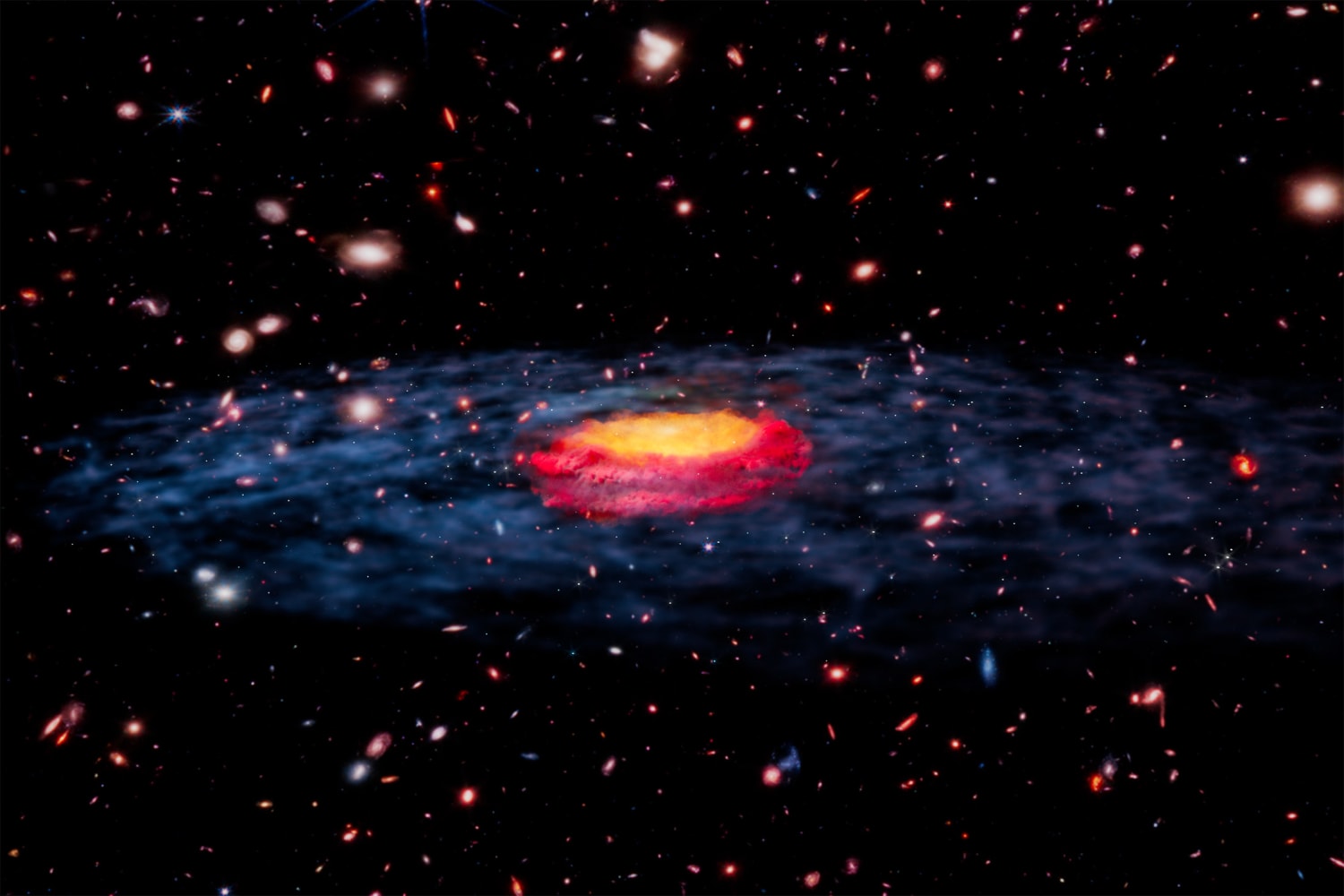A team of international researchers has identified an enormous celestial object that provides an unprecedented window into the early universe. This newly discovered black hole, located approximately 13 billion light-years from Earth, possesses a mass roughly 300 million times greater than our sun, making it one of the most massive black holes ever observed from such a distant epoch.
The discovery, made using advanced telescopic technology and sophisticated data analysis techniques, represents a significant breakthrough in astrophysics. What makes this particular black hole extraordinary isn’t just its tremendous size, but its age – the light we observe from it began its journey when the universe was less than 700 million years old. This makes the object a kind of cosmic time machine, allowing scientists to study conditions during the universe’s infancy.
Scientists utilized various astronomical observatories situated in space as well as ground-based telescopes to substantiate their results. Through examining how the black hole influences nearby materials and observing the unique radiation emissions from its accretion disk, the researchers validated both its enormous size and its status as one of the earliest supermassive black holes that emerged following the Big Bang. This finding presents challenges to current theories concerning the rapid formation of such vast entities in the context of the universe.
Dr. Samantha Chen, the principal astrophysicist of the team that made the discovery, stated, “Our present knowledge of cosmic development suggests that this black hole shouldn’t have developed to such a size so quickly.” She further commented, “The presence of this black hole compels us to rethink our theories on how the initial supermassive black holes appeared at the dawn of the universe.”
In the core of an ancient galaxy lies an enormous celestial entity, with a gravitational force so strong that it distorts the very fabric of spacetime. The powerful radiation released by matter swirling into its event horizon offers essential insights into the chemical makeup of the early universe and the emergence of the initial galaxies.
What scientists find particularly remarkable is how this discovery serves as a portal to the past. The light detected by telescopes today left the black hole’s vicinity when the universe was just 5% of its current age. By studying such ancient objects, astronomers gain insights into the mysterious period known as cosmic dawn, when the first stars and galaxies illuminated the universe.
The research team utilized gravitational lensing – a phenomenon predicted by Einstein’s theory of general relativity – to magnify the faint light from this distant object. This natural magnification effect, caused by intervening galaxy clusters bending spacetime, allowed observation of details that would otherwise remain invisible to even our most powerful telescopes.
“This discovery is like finding a perfectly preserved fossil from the universe’s childhood,” said Dr. Michael Rodriguez, a cosmologist not involved in the study. “It gives us tangible evidence to test our theories about how the first supermassive black holes formed and grew so quickly after the Big Bang.”
The findings have sparked intense discussion in the astrophysics community about black hole formation mechanisms. Some theorists propose that direct collapse of enormous gas clouds in the early universe could create such massive black holes without going through the typical stellar evolution process. Others suggest mergers of smaller black holes might have occurred more efficiently than previously thought.
Future studies scheduled using upcoming telescopes such as the James Webb Space Telescope and the soon-to-be operational Extremely Large Telescope intend to reveal additional aspects of these ancient cosmic titans. Each finding contributes to assembling the picture of how the universe evolved from its initial dark, shapeless state to the organized cosmos we observe nowadays.
For those who study the stars, this black hole offers more than a mere record-setting entity – it’s essential for grasping basic inquiries about the development of the cosmos. As scientists persist in examining the information, they aim to gain insight into the connection between initial black holes and their home galaxies, possibly uncovering the role these gravitational titans played in forming the universe we live in now.
The discovery also has implications for our understanding of dark matter and dark energy, as the growth of supermassive black holes appears intimately connected with these mysterious components of the cosmos. By studying how this black hole and others like it evolved, scientists may uncover clues about the universe’s expansion and ultimate fate.
As technology advances, allowing us to peer further back in time, each new discovery like this brings us closer to answering humanity’s most profound questions about our cosmic origins and the fundamental nature of reality itself. This particular black hole, a relic from when the universe was in its infancy, promises to keep scientists busy for years to come as they decode its secrets.

